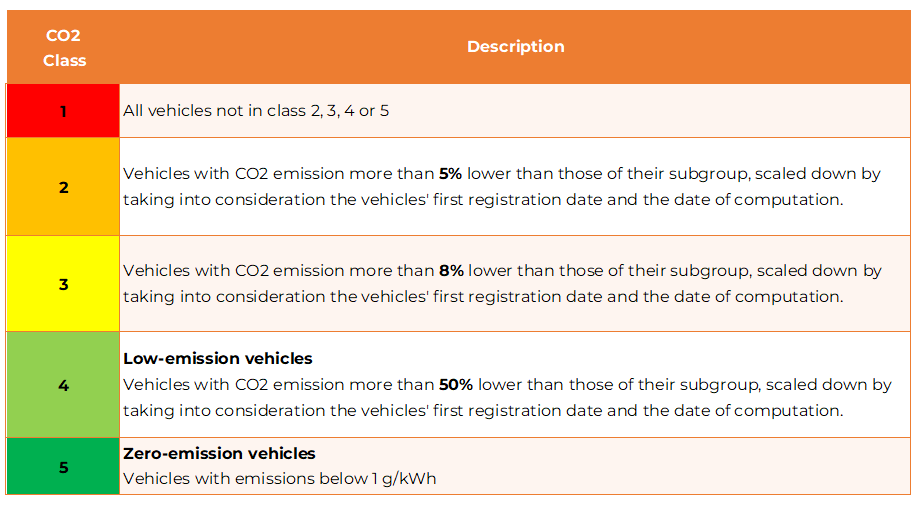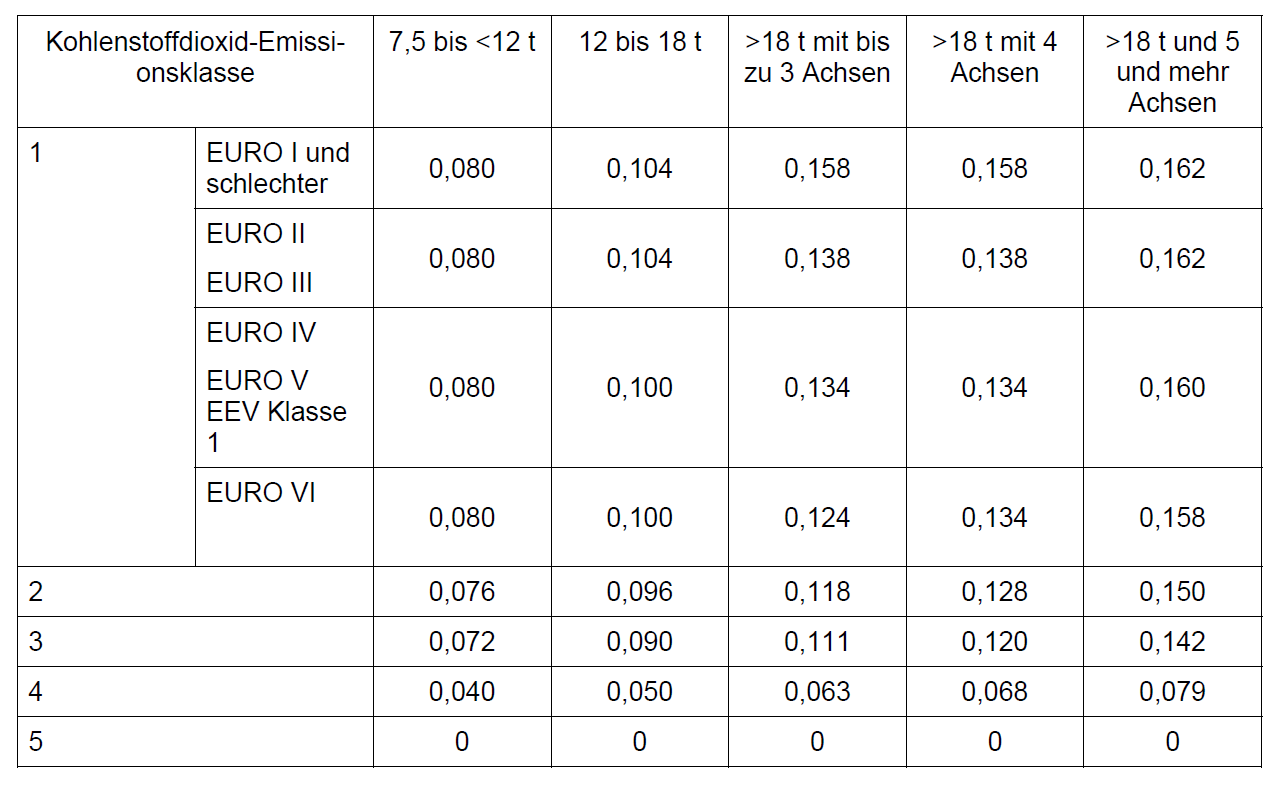The calculation of the toll rate will incorporate two major changes:
 Technically Permissible Maximum Laden Mass (TPMLM) for vehicles or F1
Technically Permissible Maximum Laden Mass (TPMLM) for vehicles or F1
The weight of the vehicle considered for the calculation will now be the TPMLM or F1 weight.
This information is mandatory and should be mentioned on the vehicle registration certificate. If not provided by November 30th, the German and Austrian networks will be automatically deactivated for the respective OBUs.
 CO2 Emission Class
CO2 Emission Class
In addition to the existing rate components, there will be a tax based on the vehicle’s CO2 emission class.
To determine the vehicle’s CO2 emission class, factors such as CO2 emissions in g/t-km and the vehicle’s subgroup will be considered. This information is specified in the Certificate of Conformity (COC) issued by the manufacturer.
If the CO2 emission class cannot be determined, the vehicle will be by default classified into CO2 emission class 1.
Only vehicles registered for the first time on July 1st, 2019, or later (and meeting Euro 6 or EEV standards) can be assigned to a more favorable CO2 emission class.


















